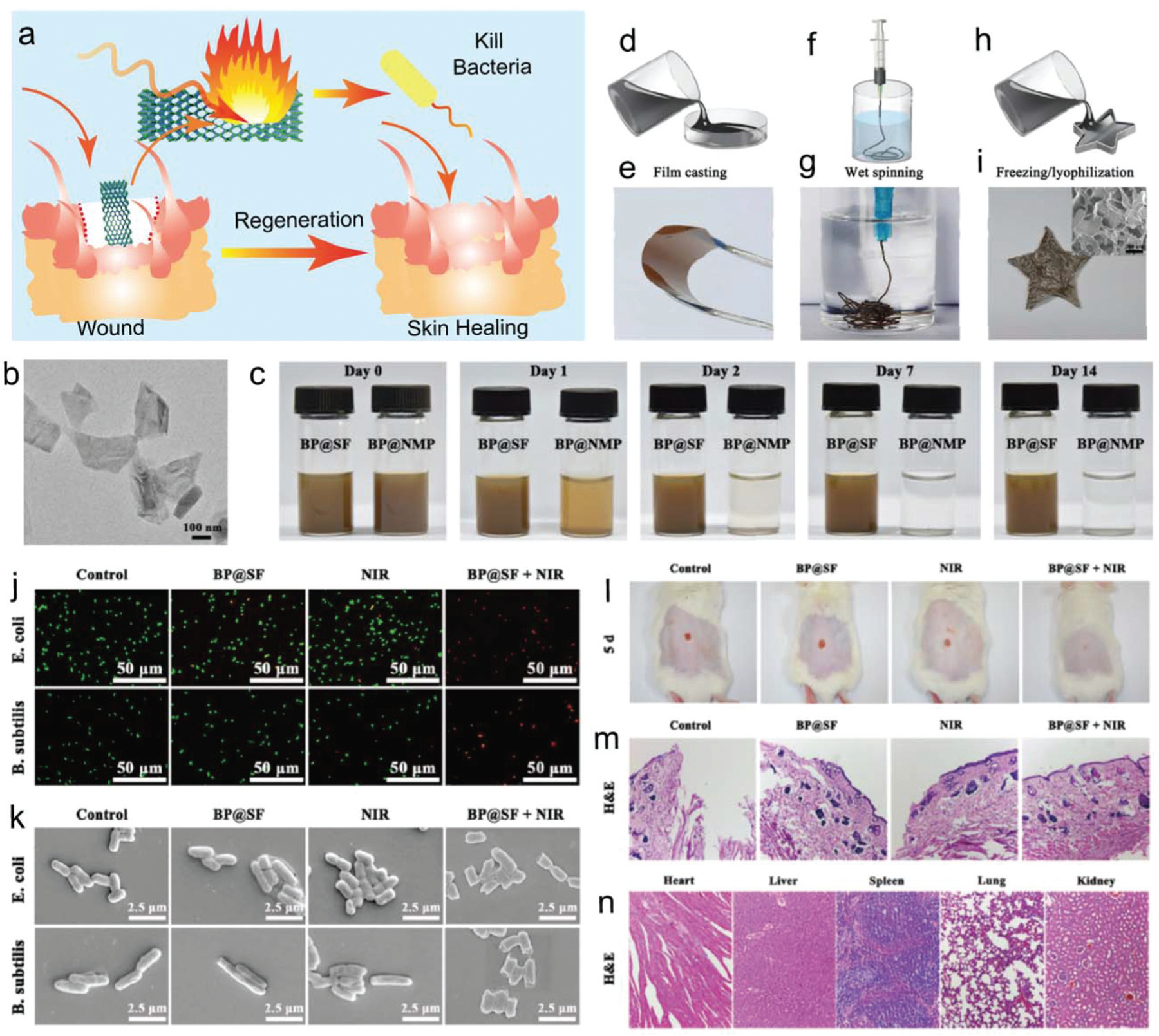Fig. 12.

(a) Photothermal guided bacterial inhibition for wound healing and skin regeneration. (b) TEM images of exfoliated BP@SF nanosheets. (c) Stability evaluation with photographs of BP@SF and BP@NMP solutions exposed to air under ambient conditions. (d) Solution casting demonstration to prepare BP@SF films and (e) photographs of fabricated BP@SF films with excellent flexibility. (f) Wet-spinning technique to fabricate BP@SF fibers and (g) photographs of fabricated BP@SF fibers that could be twisted into knots. (h) Freezing drying process to fabricate BP@SF sponges and (i) photographs of fabricated BP@ SF sponges. Photothermal antibacterial effect of BP@SF with (j) confocal images of viability assay for E. coli and B. subtilis cells (live: green; dead: red) and (k) typical morphology of the bacteria after treatment with varied combinations. (l) Photographs showing regeneration of E. coli infected skin wounds in the mouse after treatment with varied combinations. (m) Histological staining of regenerated skin wound sites after being treated with varied combinations and (n) the major organs of mice treated with BP@SF material. Reproduced with permission.134 Copyright 2018, American Chemical Society.
